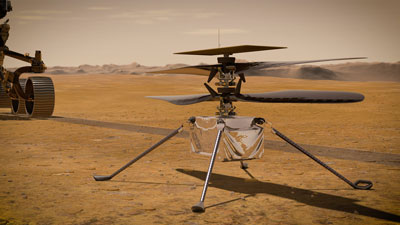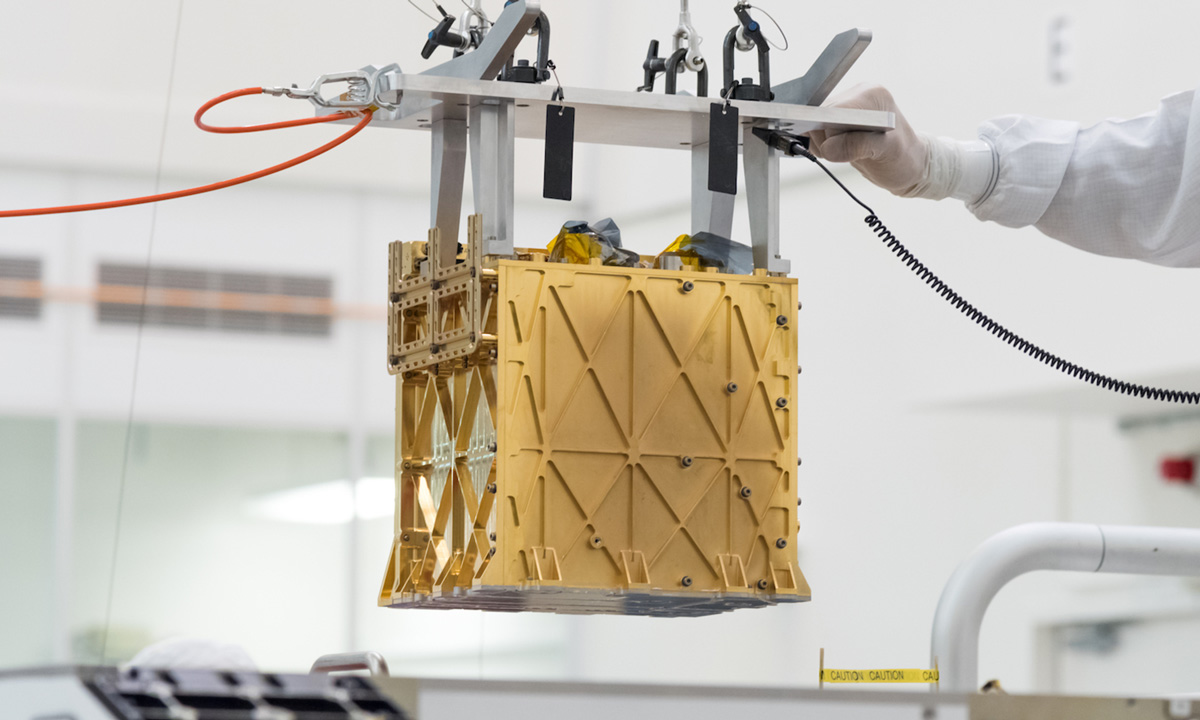Have you ever wondered if people could eventually explore and set foot on distant planets such as Mars in real life?
Recently, humans have come one step closer to making this extraordinary dream a reality!
On April 20, the Mars Oxygen In-Situ Resource Utilization Experiment, or MOXIE, converted carbon dioxide in Mars’ atmosphere to oxygen for the first time. Additionally, on April 22, NASA’s Ingenuity helicopter soared above Mars’ Jezero Crater on its third flight above the planet.
Let’s take a closer look at MOXIE and Ingenuity.
Extracting Oxygen
 Mars has a carbon dioxide-rich atmosphere — carbon dioxide makes up 95% of its atmosphere with only 0.13% of oxygen. Compare that to 21% oxygen on Earth!
Mars has a carbon dioxide-rich atmosphere — carbon dioxide makes up 95% of its atmosphere with only 0.13% of oxygen. Compare that to 21% oxygen on Earth!
MOXIE is a machine that absorbs the carbon dioxide in the atmosphere and turns it into oxygen by splitting carbon dioxide, or CO2, into CO (carbon monoxide) and O2 molecules. The oxygen’s purity is then examined before it, along with other waste products, are released into the Martian atmosphere.
After being pressurized from Mars’ atmospheric pressure of 0.006 atmospheres to 1 atmosphere, the CO2 is put into an electrolyzer at 800 degrees Celsius. Electricity is then used to electrochemically split the carbon dioxide into O2. The electrical current and oxide ions produced from the chemical reactions indicate the rate at which O2 is being produced. Currently, MOXIE produces at most 10 grams of oxygen every hour.
MOXIE opens up the possibility of sending humans to explore Mars. It not only provides the necessary breathable oxygen for astronauts on Mars but also provides the oxygen needed for astronauts to return from Mars, as the fuel of spaceships requires oxygen to burn.
Ingenuity’s Flights
 On April 19, Ingenuity flew over Mars’ Jezero Crater for the first time, hovering up to ten feet above the surface of Mars. Since then, Ingenuity has flown over Mars’ Jezero crater two more times. This marks the first instance of controlled flight on another planet.
On April 19, Ingenuity flew over Mars’ Jezero Crater for the first time, hovering up to ten feet above the surface of Mars. Since then, Ingenuity has flown over Mars’ Jezero crater two more times. This marks the first instance of controlled flight on another planet.
Because of Mars’ extremely thin atmosphere, it is difficult for a helicopter to generate enough lift for it to fly. Ingenuity counters this issue by using large, carbon fiber rotor blades that spin extremely quickly, about six times as fast as rotor blades spin on Earth. Additionally, Ingenuity is small and lightweight which works well on Mars which has low gravity — the amount of lift necessary for Ingenuity to fly is less.
Scientists hope to fly Ingenuity three more times, with each flight lasting longer and involving more complex maneuvers. Ingenuity’s flights demonstrate the possibility of aerial exploration of Mars–something that was previously thought impossible due to Mars’ thin atmosphere.
Both MOXIE and Ingenuity are pioneers of human exploration of Mars–something that was previously thought impossible. They pave the way to a fascinating future, where humans may eventually be able to inhabit Mars.
Sources: NASA, Space.com



